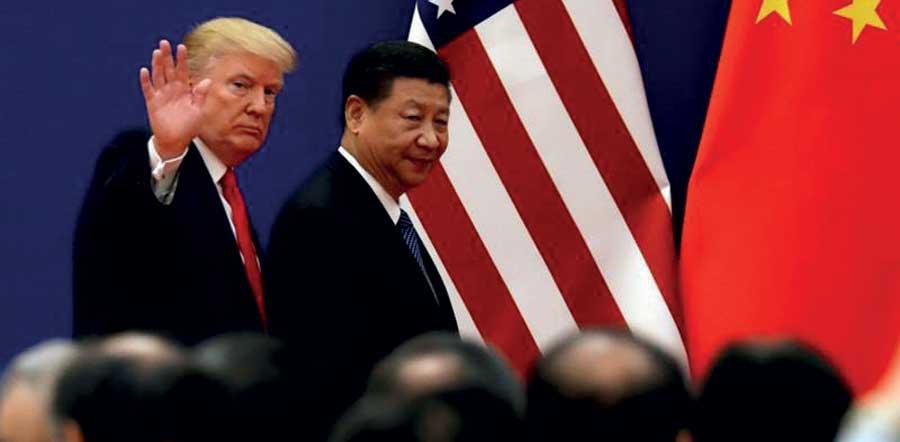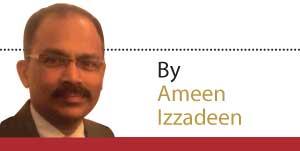Reply To:
Name - Reply Comment

The Non-Aligned Movement (NAM) has often been derided as a defunct grouping or highly redundant since the collapse of the loose bipolar international system in 1991. Yet, this week, NAM proved that it has still some life left to live for the common cause of developing countries. This was when Azerbaijan hosted an emergency virtual summit as part of an effort to initiate a global campaign to fight the Covid-19 pandemic.
The move belies criticism that NAM is not relevant today. The Azerbaijan-initiated summit made a powerful statement that NAM could still be useful though it has outlived its necessity or raison detre for its members to survive in a cold war setup dominated by two rival forces – the Western bloc led by the United States and the North Atlantic Treaty Organisation (NATO) and the Eastern bloc led by the Soviet Union and the Warsaw Pact military alliance.
But after the demise of the Cold War, NAM countries gradually drifted away from Third World solidarity that had bound them together since the Afro-Asian solidarity movement of the late 1940s and the early 1950s. Most NAM members today adopt self-centred or national interest-driven stands at international forums at the expense of undermining their collective bargaining power, which was their strength during the Cold War. The united stand had enabled NAM nations to have their say, sometimes their way, too, at international forums, be it the drafting of a new treaty like the Law of the Sea Convention or the setting up of United Nations bodies such as UNCTAD to ensure a fair world market price for third world commodities.
With the demise of the bipolar world order, once leading NAM nations began to woo the US, which emerged as the world’s only superpower. Take for instance, India. It once shone as the heart and soul of NAM upholding the Panchasheela (five precepts) principles in international relations, but it is today militarily, strategically and economically heavily allied with the US. So much so, it has become the first line of defence or the frontline in the United States’ new cold war with China. It has even subscribed to a defence formation called the Quartet which includes, the US, Australia and Japan.
With the rise of China as a rival to the US, a new cold war division has emerged. A new international world order is being given form and shape by the US-China rivalry. China’s Belt and Road network in a way appears to be a resurrection of the Warsaw alliance sans its military aspects, of course, with China as the mother country. Short of a hot war or a full-fledged military confrontation, the US despite the pandemic’s crushing blow to its economy, is now on an all out effort to stop China from emerging as the world’s number one power in the post-Covid world.
The current US-China war of words over the origin of the Covid-19 virus has brought relations between the two major powers to a new nadir. The US stance indicates that Washington is determined to force China pay heavily for what it calls failures to share information about the virus with the rest of the world in the early stages of the disease in China’s Hubei Province.
"The current US-China war of words over the origin of the Covid-19 virus has brought relations between the two major powers to a new nadir"
The Donald Trump administration, especially the State Department, has been accusing China of carrying out a Covid-19 disinformation campaign to bring about an economic crash. It has warned of investigations, prosecution and economic sanctions against China.
One wonders whether the US body language points to the possibility of a convening of an international conference on the lines of the post-World War II San Francisco conference summoned to demand war reparations from Japan. The undercurrents of US moves underline the Thucydides theory, according to which the number one power will not give up its position to a rising power without a fight. In other words, the US has got itself into the Thucydides’ trap and a war is inevitable. But in a nuclear-weapon era, such a war assumes the form of what experts called hybrid warfare. It is defined as a military strategy which employs political warfare and blends conventional warfare, irregular warfare and cyberwarfare with other influencing methods, such as fake news, diplomacy, lawfare (law suits), regime change strategies and electoral intervention.
As the two nations are going at full throttle with hybrid warfare, they have heightened diplomacy to strengthen their presence in other countries. On this score, China has apparently taken an early lead in keeping with President Xi Jinping’s global vision. Xi has vowed to resist every obstacle standing in the way of China’s rise. In recent months and weeks, China, while battling the Covid-19 pandemic, has also stepped up military activities in the disputed South China Sea. It has also resorted to retortive or retaliatory diplomacy to attack the US, especially Secretary of State Mike Pompeo, who has been spewing out anti-China invectives since the relations turned more hostile over the US allegations that the new coronavirus originated from a laboratory in Wuhan. China’s foreign ministry has claimed the virus was spread in China by US military personnel.
With cheque book and medical aid diplomacy, China has fortified its ‘humanitarian’ presence in more than 80 countries to help them deal with the pandemic. They include Sri Lanka, Iran and even US allies such as Italy.
Since the pandemic’s outbreak in February, Sri Lanka has been receiving medical aid from Chinese government and corporations. It also obtained a welcome loan of US$ 500 million from Beijing to overcome economic challenges linked to the pandemic.
The US has also come forward to provide humanitarian aid worth US$ 5million to Sri Lanka, giving credence to the claims that the two rival powers are trying to outmanouevre each other in fortifying their strategic ties with geopolitically important countries in preparation for the post-Covid world order.
It is in this chaotic context, once again non-alignment is getting a new lease of life with Azerbaijan’s initiative. The virtual NAM summit attended by Sri Lanka’s President Gotabaya Rajapaksa and India’s Prime Minister Narendra Modi, among others, was aimed at moving the world in the direction of peace and unity to forge a common force through the United Nations mechanism not only to fight the Covid pandemic but also to act as a catalyst to bring about a semblance of order to the post-Covid world disorder.
With the pandemic affecting ever country rich and poor, all nations should see the wisdom in non-alignment.